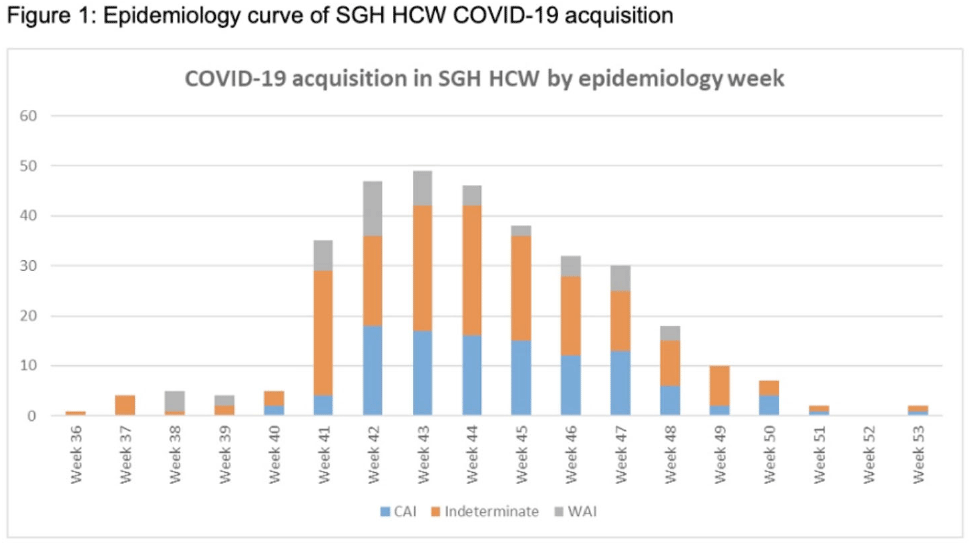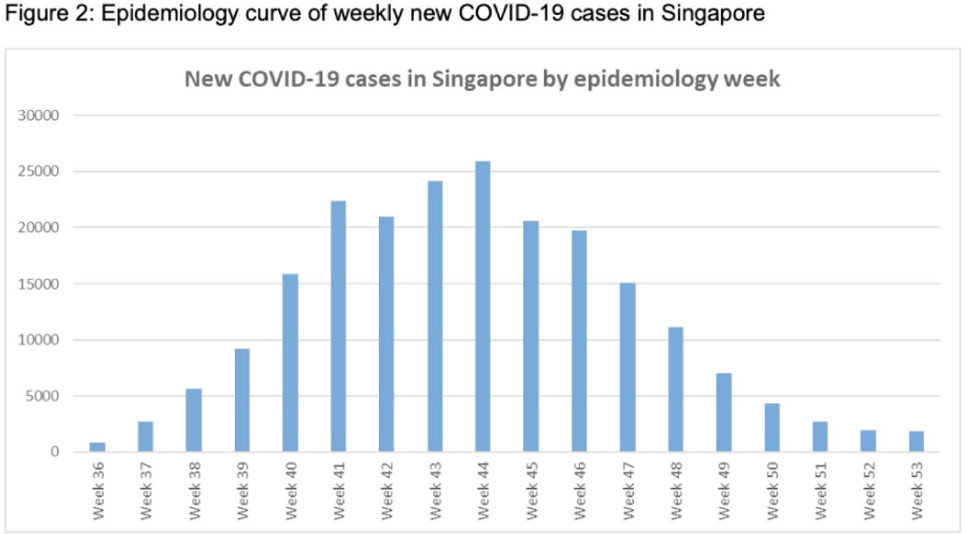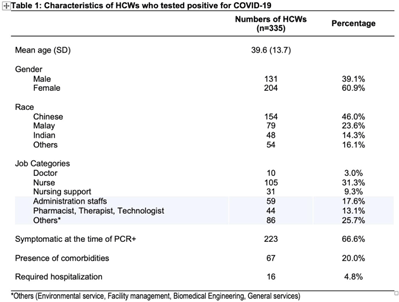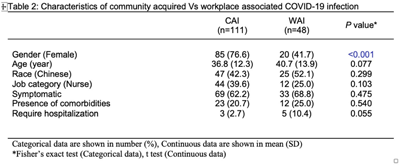40 results
Tomato and lemon extracts synergistically improve cognitive function by increasing brain-derived neurotrophic factor levels in aged mice
-
- Journal:
- British Journal of Nutrition / Volume 131 / Issue 7 / 14 April 2024
- Published online by Cambridge University Press:
- 29 November 2023, pp. 1105-1114
- Print publication:
- 14 April 2024
-
- Article
-
- You have access
- Open access
- HTML
- Export citation
SG-APSIC1056: Finding the right fit: Our experience in quantitative N95 respirator fit-testing
-
- Journal:
- Antimicrobial Stewardship & Healthcare Epidemiology / Volume 3 / Issue S1 / February 2023
- Published online by Cambridge University Press:
- 16 March 2023, p. s20
-
- Article
-
- You have access
- Open access
- Export citation
The dysfunction of hormone-sensitive lipase induces lipid deposition and reprogramming of nutrient metabolism in fish
-
- Journal:
- British Journal of Nutrition / Volume 130 / Issue 4 / 28 August 2023
- Published online by Cambridge University Press:
- 21 November 2022, pp. 588-603
- Print publication:
- 28 August 2023
-
- Article
- Export citation
COVID-19 among healthcare workers of a tertiary-care hospital in Singapore
-
- Journal:
- Antimicrobial Stewardship & Healthcare Epidemiology / Volume 2 / Issue S1 / July 2022
- Published online by Cambridge University Press:
- 16 May 2022, pp. s34-s35
-
- Article
-
- You have access
- Open access
- Export citation
Saetaspongia sponges from the Cambrian (Stage 4) Balang Formation of Guizhou, China
-
- Journal:
- Journal of Paleontology / Volume 95 / Issue 5 / September 2021
- Published online by Cambridge University Press:
- 07 May 2021, pp. 944-956
-
- Article
- Export citation
Asian-Pacific perspective on the psychological well-being of healthcare workers during the evolution of the COVID-19 pandemic
-
- Journal:
- BJPsych Open / Volume 6 / Issue 6 / November 2020
- Published online by Cambridge University Press:
- 08 October 2020, e116
-
- Article
-
- You have access
- Open access
- HTML
- Export citation
Clostridium difficile Infection Prevention Bundle Implementation
-
- Journal:
- Infection Control & Hospital Epidemiology / Volume 41 / Issue S1 / October 2020
- Published online by Cambridge University Press:
- 02 November 2020, pp. s170-s171
- Print publication:
- October 2020
-
- Article
-
- You have access
- Export citation
Relations between Emotional Expressivity Dimensions and DSM-5 Post-traumatic Stress Disorder Symptom Clusters in a Trauma-Exposed Community Sample
-
- Journal:
- Behaviour Change / Volume 37 / Issue 3 / September 2020
- Published online by Cambridge University Press:
- 11 June 2020, pp. 116-129
-
- Article
- Export citation
Associations between major dietary patterns and anxiety in middle-aged adults in eastern China
-
- Journal:
- Public Health Nutrition / Volume 24 / Issue 7 / May 2021
- Published online by Cambridge University Press:
- 15 May 2020, pp. 1716-1724
-
- Article
-
- You have access
- HTML
- Export citation
Soil quality and microbiology in response to fertilizations in a paddy-upland rotation with multiple crops and frequent tillage
-
- Journal:
- Experimental Agriculture / Volume 56 / Issue 2 / April 2020
- Published online by Cambridge University Press:
- 14 October 2019, pp. 227-238
-
- Article
- Export citation
Effects of prophylactic administration of glutamine on CD4+ T cell polarisation and kidney injury in mice with polymicrobial sepsis
-
- Journal:
- British Journal of Nutrition / Volume 122 / Issue 6 / 28 September 2019
- Published online by Cambridge University Press:
- 11 June 2019, pp. 657-665
- Print publication:
- 28 September 2019
-
- Article
-
- You have access
- HTML
- Export citation
Chinese Adolescents’ Relationships with Mothers, Fathers, and Siblings: Associations With Youth's Internalising and Externalising Problems
-
- Journal:
- Journal of Relationships Research / Volume 10 / 2019
- Published online by Cambridge University Press:
- 12 July 2019, e15
- Print publication:
- 2019
-
- Article
- Export citation
Effect of thermal cycles on the laser beam welded joint of AA2060 alloys
-
- Journal:
- Journal of Materials Research / Volume 33 / Issue 20 / 29 October 2018
- Published online by Cambridge University Press:
- 19 July 2018, pp. 3439-3448
- Print publication:
- 29 October 2018
-
- Article
- Export citation
Differential protein analysis of serum exosomes post-intravenous immunoglobulin therapy in patients with Kawasaki disease
-
- Journal:
- Cardiology in the Young / Volume 27 / Issue 9 / November 2017
- Published online by Cambridge University Press:
- 14 August 2017, pp. 1786-1796
-
- Article
- Export citation
Numerical Study of the Solid Particle Erosion on H-Type Finned Circular/Elliptic Tube Surface
- Part of
-
- Journal:
- Communications in Computational Physics / Volume 21 / Issue 2 / February 2017
- Published online by Cambridge University Press:
- 07 February 2017, pp. 466-489
- Print publication:
- February 2017
-
- Article
- Export citation
8 - Civil Protection: Identifying Opportunities for Collaboration
-
-
- Book:
- Security Relations between China and the European Union
- Published online:
- 05 September 2016
- Print publication:
- 29 September 2016, pp 145-166
-
- Chapter
- Export citation
Corilagin ameliorates schistosomiasis hepatic fibrosis through regulating IL-13 associated signal pathway in vitro and in vivo
-
- Journal:
- Parasitology / Volume 143 / Issue 12 / October 2016
- Published online by Cambridge University Press:
- 21 July 2016, pp. 1629-1638
-
- Article
- Export citation
2015 Nepal Earthquake: Analysis of Child Rescue and Treatment by a Field Hospital
-
- Journal:
- Disaster Medicine and Public Health Preparedness / Volume 10 / Issue 5 / October 2016
- Published online by Cambridge University Press:
- 18 May 2016, pp. 716-719
-
- Article
- Export citation
CPA Calculation Method based on AIS Position Prediction
-
- Journal:
- The Journal of Navigation / Volume 69 / Issue 6 / November 2016
- Published online by Cambridge University Press:
- 19 April 2016, pp. 1409-1426
- Print publication:
- November 2016
-
- Article
- Export citation
Investigation on crack propagation in single crystal Ag with temperature dependence
-
- Journal:
- Journal of Materials Research / Volume 30 / Issue 22 / 27 November 2015
- Published online by Cambridge University Press:
- 16 November 2015, pp. 3553-3563
- Print publication:
- 27 November 2015
-
- Article
- Export citation







